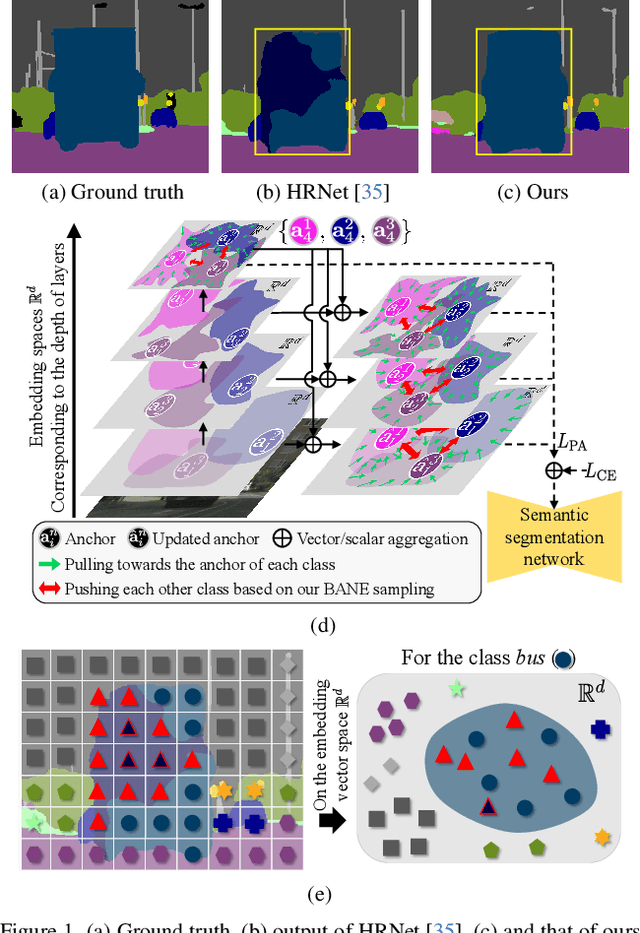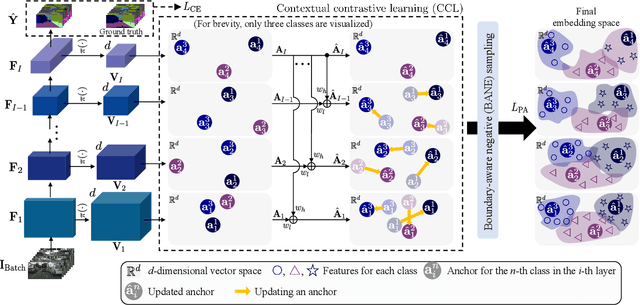Wanhee Kim
Contextrast: Contextual Contrastive Learning for Semantic Segmentation
Apr 16, 2024



Abstract:Despite great improvements in semantic segmentation, challenges persist because of the lack of local/global contexts and the relationship between them. In this paper, we propose Contextrast, a contrastive learning-based semantic segmentation method that allows to capture local/global contexts and comprehend their relationships. Our proposed method comprises two parts: a) contextual contrastive learning (CCL) and b) boundary-aware negative (BANE) sampling. Contextual contrastive learning obtains local/global context from multi-scale feature aggregation and inter/intra-relationship of features for better discrimination capabilities. Meanwhile, BANE sampling selects embedding features along the boundaries of incorrectly predicted regions to employ them as harder negative samples on our contrastive learning, resolving segmentation issues along the boundary region by exploiting fine-grained details. We demonstrate that our Contextrast substantially enhances the performance of semantic segmentation networks, outperforming state-of-the-art contrastive learning approaches on diverse public datasets, e.g. Cityscapes, CamVid, PASCAL-C, COCO-Stuff, and ADE20K, without an increase in computational cost during inference.
 Add to Chrome
Add to Chrome Add to Firefox
Add to Firefox Add to Edge
Add to Edge